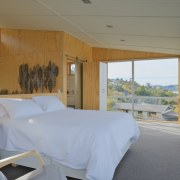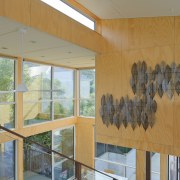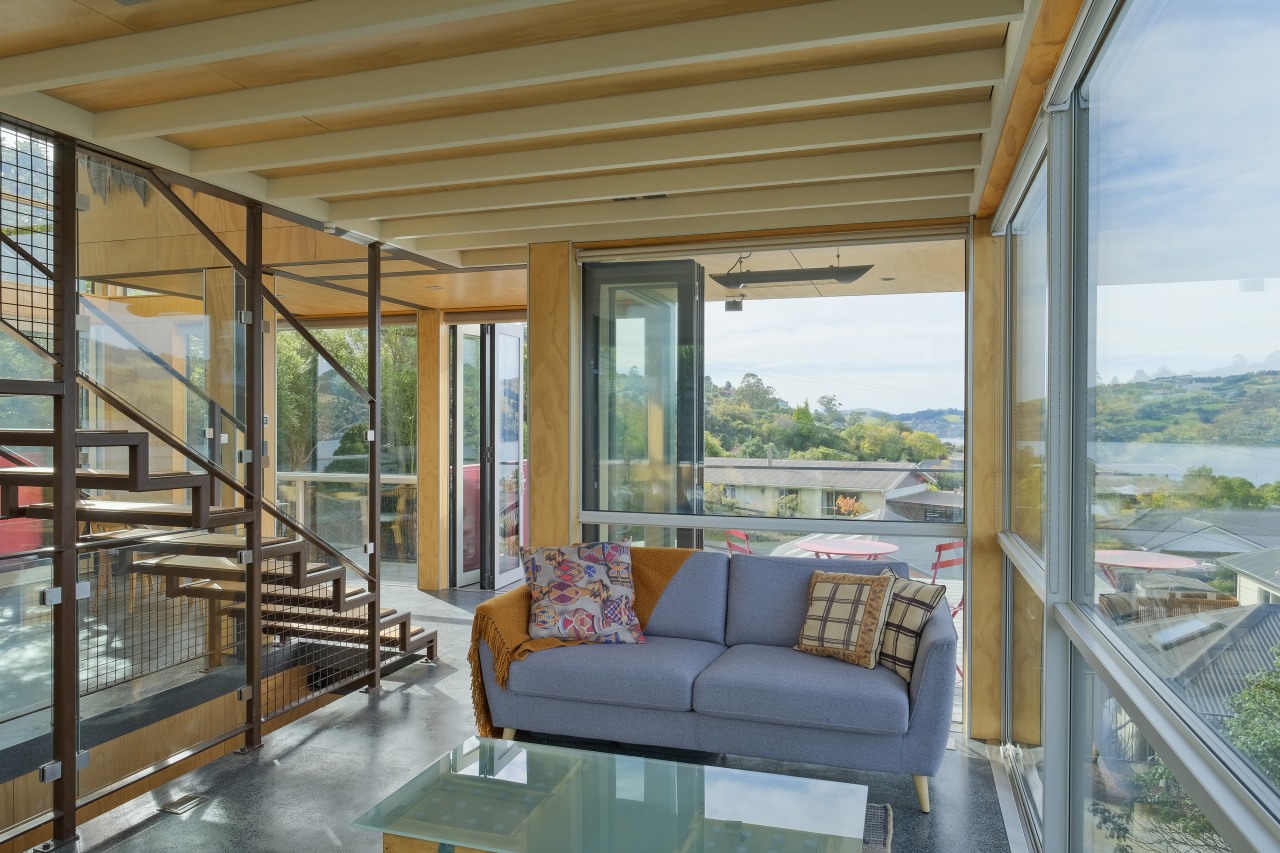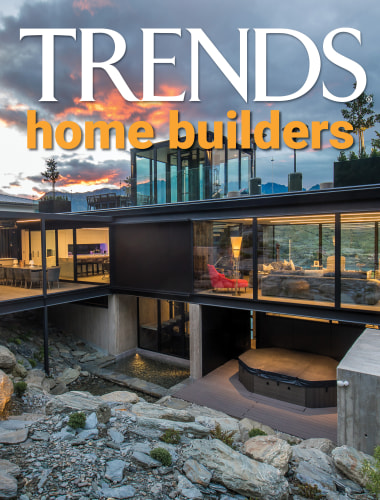Rising to the situation
Set on a modest footprint, this see-through, three-level home climbs to the sun and views and is so well ventilated, the heat pumps were done away with
Designed by Cameron Grindlay, Dwelling Architectural Design
From the designer:
PROJECT DESCRIPTION
- The homeowner and surveyor set minimum floor levels to achieve views over houses onto the beautiful Otago Harbour. Views up, down and across the harbour were requested as well as windows for solar gain facing the hill behind.
- Further requests from the homeowner included a low maintenance exterior (no stained timber); no GIB board, a bachelor pad design; an easy to heat, low running costs home; and also two decks, so one could always be used depending on wind direction.
- In terms of rooms and living spaces, the middle floor was to be for living, and the floor below to have a bathroom, bedroom, laundry and garage. The top floor is a mezzanine and has the master bedroom and ensuite. Additionally, the ability to extend the mezzanine for a third bedroom is allowed for without affecting the structure or the external envelope.
- Due to site and District Plan constraints, the footprint of the building is 57m², but is three storeys high. The basic shape is a cube with a two-part mono pitched roof to allow northern sunlight in (regulated by motorised blinds).
DESIGN FEATURES/CREATIVE SOLUTION
Planning
- The bachelor pad main level is open-plan living with the open master bedroom mezzanine above, while the bottom floor is for guests and utilities.
- The stair is central to the planning and the second flight is see through to optimise views – hence the open tread stairs, metal mesh and glass balustrades.
- The decks have large doors giving the feeling of extra space.
- Opening windows allow for cross ventilation both horizontally and vertically through the home to ensure a stack effect for air movement and freshness.
- A freestanding fire and heat pumps were removed from the plans as the thermal performance of the envelope makes them redundant.
Materials and context
- Gull Grey Longrun cladding was selected with Grey Friars windows so that the building is neutral and recessive, blending in with the bush surroundings.
- The aluminium joinery takes on a sculptured look as it makes its way around the building. The joinery is recessed into the 240mm thick walls to provide visual depth and shadow lines.
- The design takes into consideration the surrounding Pohutukawa, which break up the home’s grey tones.
- Magnaflow longrun, aluminium joinery, glass and aluminium balustrades and composite decks are used because of their low maintenance and durability in a harbourside setting.
- Raw materials are used for the interior, with nothing hidden – polished concrete, exposed steel and plywood fit the setting. All exposed steel was allowed to rust, then was lacquered with Nyalic to give an aged look. Nyalic protects materials in wet/corrosive environments.
Sustainability and efficiency
- Insulated polished concrete floors for thermal mass.
- A ceiling fan pushes heat back down on cooler days, while opening windows allows for cooling cross ventilation on warmer days. Sunlight is controlled by motorised blinds.
- The home has 240mm-thick framed walls, while the windows are thermally broken aluminium, tripled glazed with Low-e/argon. Plus the home features Warm Roof construction.
- The house has a small footprint with associated advantages.
- Other touches include efficient LED lighting and the decks are made from composite/recycled decking.
Credit list
Story by: Trendsideas
Photography by: Sean Waller
28 Mar, 2021
Home kitchen bathroom commercial design
Classic looks, contemporary efficiency
14 Dec, 2025
Personality plus
14 Dec, 2025
Diving into nature
14 Dec, 2025
Home Builders
Start your new home build or renovation project with confidence by choosing the right home builder for you and your fami...
Read More

















